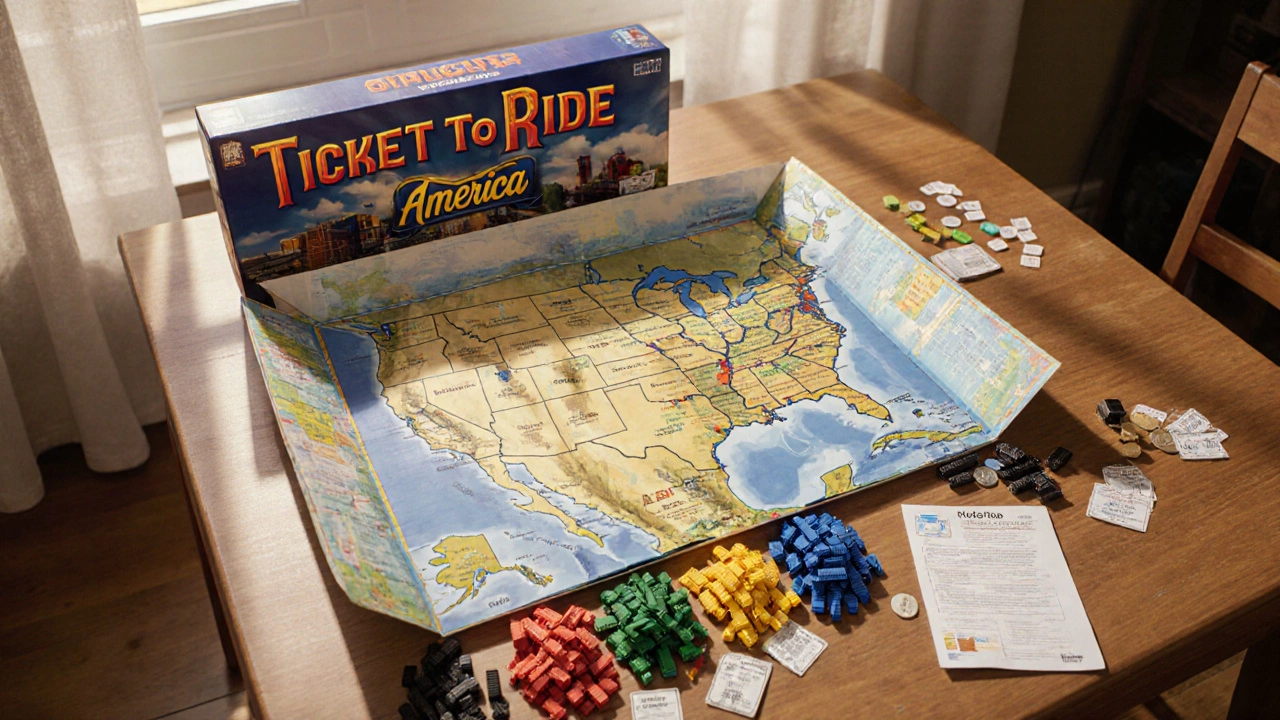
Learn the exact number of train cars in Ticket to Ride America, per player and total for five players, plus storage tips and edition comparisons.
When talking about Ticket to Ride train pieces, the colored wooden cars that players place on routes to claim railway lines in the popular board game, you’re looking at the core mechanic that turns a map of Europe, America or Asia into a competition of strategy. Also known as rail car tokens, these pieces link the abstract route cards to a visual network on the board. Understanding how they work, where they come from, and how collectors treat them can dramatically improve both casual play and serious hobby‑level collecting.
The Ticket to Ride board game, a family‑friendly Euro‑style game that simulates building transcontinental railways provides the framework for the train pieces. Each game includes a set of railway route cards, cards that assign specific city‑to‑city connections and score values. When a player assembles the required set of colored train pieces on the board, they fulfill the card’s requirement and earn points. The relationship is straightforward: Ticket to Ride train pieces represent the physical claim, while route cards define the logical objective. This dual system creates a clear puzzle that’s easy to learn but hard to master.
Beyond the base game, Ticket to Ride expansions, add new maps, extra route cards, and often a larger pool of train pieces in fresh colors expand the strategic landscape. For example, the Europe expansion introduces tunnels and ferries, requiring players to use additional train pieces for special actions. The Asia version adds a resource‑management twist, where train pieces double as commodity tokens. Each expansion therefore requires more train pieces, making a robust collection essential for anyone who wants to rotate through the full catalog without missing a piece.
Collectors often focus on the collector’s edition, special releases that bundle premium train pieces, deluxe boards, and exclusive artwork. These editions typically feature higher‑quality wood, chrome‑finished metal pieces, or even custom‑painted sets that differ from the standard plastic‑laden versions. The market values them based on condition, rarity, and whether the set includes every color needed for the base game and its expansions. A well‑rounded collection therefore mixes standard components for everyday play with premium items for display or special‑occasion games.
Understanding the interplay between these entities helps you decide what to buy and how to store them. If you primarily play the base game, a single set of train pieces per color is enough. But if you frequently switch between expansions, you’ll need extra pieces to avoid color shortages—especially on maps where multiple players might claim the same route simultaneously. Organizing pieces by color in a small tray or zip‑lock bag prevents loss and speeds up setup. Meanwhile, keeping collector’s items in a protective case safeguards the finish and maintains resale value.
Below you’ll find a curated list of articles that dig deeper into each aspect: the design of the train pieces, strategies for using them across maps, tips for building a cost‑effective collection, and guides on caring for premium components. Whether you’re a newcomer eager to master the basics or a seasoned hobbyist looking to polish your collection, the resources ahead should give you a clear path forward.

Learn the exact number of train cars in Ticket to Ride America, per player and total for five players, plus storage tips and edition comparisons.